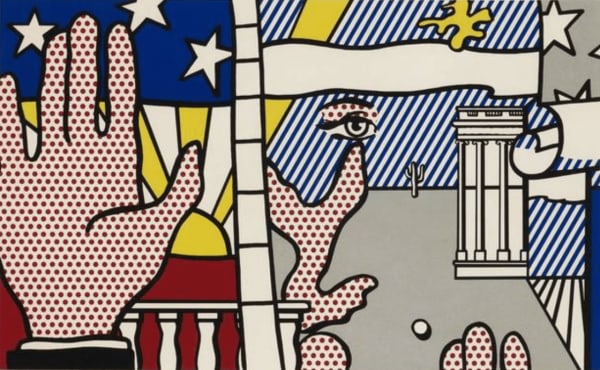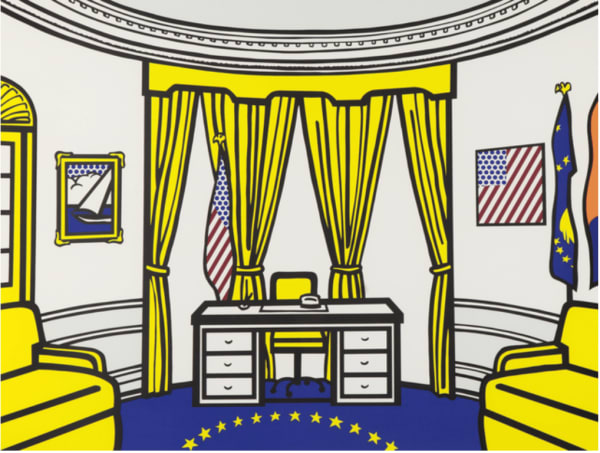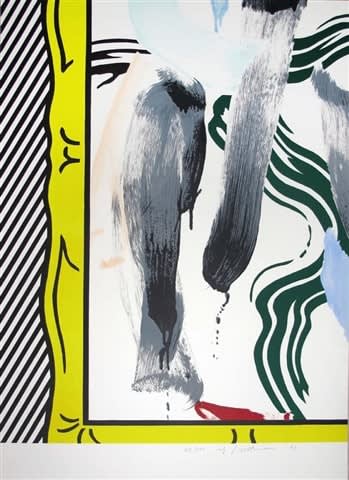Roy Lichtenstein's Inaugural Print created in 1977 was the artist’s contribution to the Inaugural Impressions Portfolio, published by the Democratic National Committee to commemorate President Jimmy Carter's inauguration. Inaugural Print is one of Lichtenstein's most enigmatic and referential works. The abstract composition pays homage to American cultural history while cleverly echoing the layout of vintage political propaganda posters. Notable elements include a raised hand in the foreground, reminiscent of the presidential swearing-in ceremony, along with white stars and a blue background, symbolizing the American flag and democratic values.
Roy Lichtenstein's The Oval Office was created as part of the Artists for Freedom of Expression project, a commission aimed at supporting the Democratic National Committee during the 1992 Clinton/Gore campaign. Drawing inspiration from the actual Oval Office, Lichtenstein approached the work with a modernist lens, crafting a symbolic representation of the nation's highest seat of power.
Another significant political work Lichtenstein created during this period was I Love Liberty. He depicted the Statue of Liberty in a comic strip style, holding her iconic torch aloft. This piece was made for the 1982 I Love Liberty celebration.
Another notable piece by Roy Lichtenstein was the non-figurative work Against Apartheid created in 1983. This artwork evokes a feeling of incompleteness in the viewer. Intentionally abstract, it withholds a complete image, leaving much to interpretation. Lichtenstein donated the piece to the Artists of the World Against Apartheid foundation.
Roy Lichtenstein’s Forms in Space exemplifies his signature style and underscores his pioneering role in the Pop Art movement. Created in 1985, this print highlights both Lichtenstein’s expertise in screen printing and his ongoing exploration of popular culture’s influence on contemporary art. A prolific printmaker, Lichtenstein’s practice evolved alongside his work as a painter and sculptor. Forms in Space emerged during a period when Lichtenstein was revisiting and reinterpreting elements from his earlier pieces, notably incorporating his famous Benday dots, first seen in his 1960s comic book-inspired paintings. His stylized portrayal of popular culture exposes its superficiality, while also blurring the line between mass culture and fine art.
Lichtenstein’s use of American motifs in this piece is both intentional and subversive. By appropriating the image of the American flag and titling the work Forms in Space, he playfully critiques how familiar icons can be transformed into new works of art. The tension between illusion and reality is a recurring theme in Lichtenstein's art, and this print reflects his talent for reimagining and reinventing, mirroring the dynamic and evolving nature of contemporary art during this period.
Discover our current selection of original Roy Lichtenstein art for sale and contact info@guyhepner.com for further details. Looking to sell? Find out how to sell Roy Lichtenstein prints with Guy Hepner.






